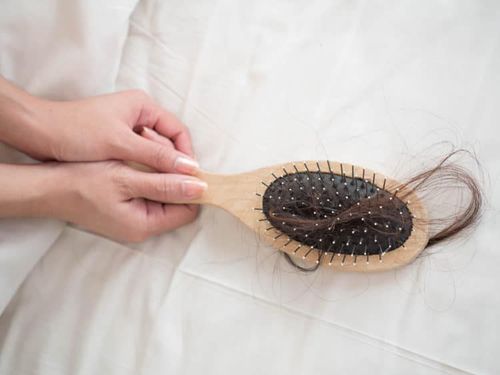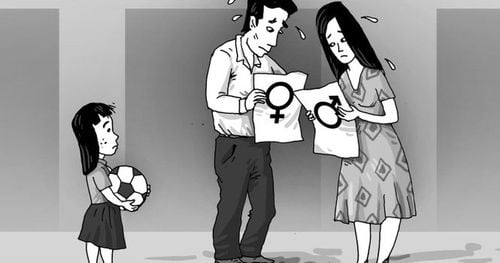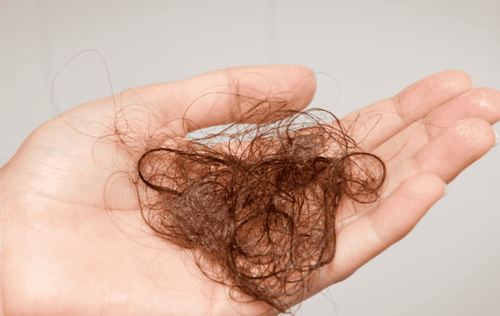This is an automatically translated article.
On average, people can lose up to 100 hairs from their scalp each day. Occasionally you will see a few hairs on the comb after combing your hair. Factors such as age, genetics, hormones, medications, pregnancy, cosmetics, stress, diet, or certain illnesses can all be possible causes of hair loss.1. What is hair loss?
Hair is made up of a protein called keratin that is produced in the hair follicles in the outer layer of the skin. As the hair follicles make new hair cells, the old cells are pushed away from the surface of the skin at a rate of about 15.3 centimeters per year. The hairs that we see are in fact dead keratin cells. The average adult will have about 100,000 to 150,000 hairs and lose up to about 100 hairs per day for a variety of reasons. Therefore, it is not alarming if every day you see a few hairs stuck in your comb.
At any given time, about 90% of the hair on the average person's scalp is still growing. Each hair follicle has its own life cycle and is influenced by age, disease and a host of other factors. The life cycle of each hair follicle can be divided into 3 phases:
Growth phase: This phase usually lasts from 2 to 8 years. During this phase, hair grows quite rapidly. Recession phase: During the transition of stages 1 and 3, hair growth begins to slow down. This phase lasts 2 to 3 weeks The resting phase: Lasts 2 to 3 months. This is the stage when the hair follicles stop working. This stage may come earlier in people with prolonged stress. The hair cells in this stage are dead cells and tend to be keratinized like the epidermis on the surface of the skin. Corresponding to the stages of hair follicles, hair loss can include many types including:
Natural alopecia: A condition where hair falls out more and more with age. Many hair follicles begin to enter the resting phase, so the hair becomes shorter and less numerous. Genetic alopecia: Hereditary hair loss can occur in both men and women. Men with hereditary hair loss are also known as male pattern baldness and can begin to appear by the age of 20. For women, the age of onset of this condition is usually over 40 years old and the hair falls out evenly over the entire scalp. Sudden hair loss: It can lead to patchy or even total hair loss in children and adolescents. However, about 90% of people with this condition, their hair grows back within a few years. Scar alopecia: Inflammation of the scalp (cellulitis, folliculitis, acne ...) and other skin disorders such as lupus often leave scars and destroy the skin's ability to regenerate hair. head. Using a sharp comb can also cause damage that can lead to permanent hair loss.
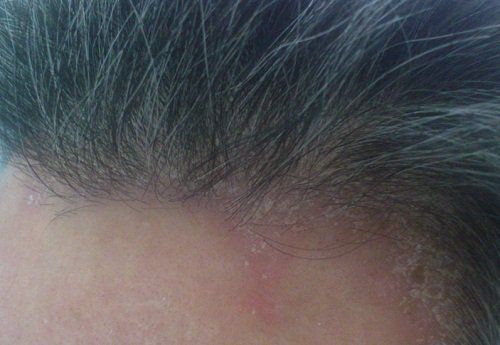
Tình trạng viêm da đầu tạo sẹo gây nên tình trạng rụng tóc
2. Hair loss basics
2.1. Causes of hair loss
Currently, doctors as well as hair and scalp experts have not been able to find the reason why some hair follicles have a shorter growth time than others. However, studies conducted have shown that a number of factors can be the cause of hair loss, including:
Hormonal disorders: Abnormal levels of certain hormones, typically androgens, can lead to hair loss. to mass hair loss Genetic factors: Some genes for baldness can be passed on from parents to their children Long-term stress, certain diseases, and women in the past Pregnancy and breast-feeding can cause temporary hair loss. In addition, roundworms or fungi can also cause hair loss. Certain medications, especially those used in cancer chemotherapy, blood thinners, beta-adrenergic blockers used to regulate blood pressure, and birth control pills, can cause temporary hair loss. Burns, trauma, or damage from X-rays can also cause temporary hair loss. In case the wound does not leave a scar, the hair may regrow after the wound has completely healed. Autoimmune diseases: Some problems with the body's immune system cause it to attack even the keratin cells leading to hair loss. However, in most cases the hair will grow back even darker and thicker than it was before the disease. Performing care and beauty procedures such as shampooing, perm, dyeing... too often can make hair thin, weak and brittle. However, hair can grow back after a period of discontinuation. Care should be taken to avoid leaving scalp lesions as they can cause permanent patches of hair loss. Certain medical conditions such as hypothyroidism or hyperthyroidism, lupus erythematosus, diabetes, iron deficiency anemia, and digestive disorders can cause hair loss. A diet with severe protein or energy deficiencies can also lead to temporary hair loss.
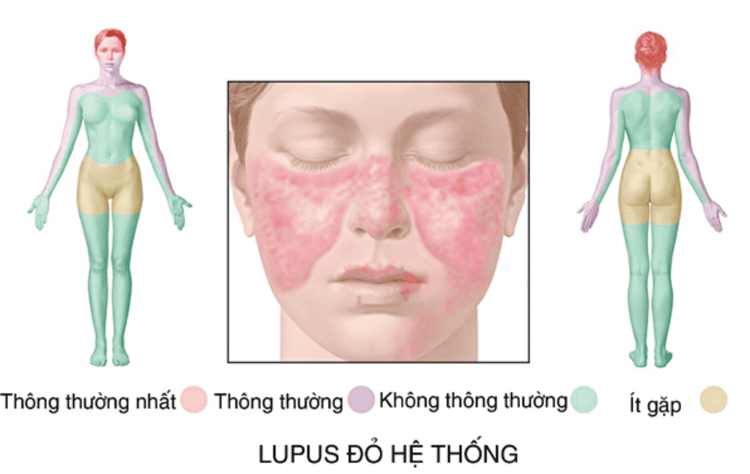
Một số bệnh lý như suy giáp hay cường giáp, bệnh lupus ban đỏ, rối loạn tiêu hóa.. có thể gây ra rụng tóc
2.2. Symptoms of hair loss
Signs of hair loss and hair loss conditions vary between men and women, and between adults and children. The signs of hair loss in men include: The condition of thinning and thinning hair, there are some areas where hair cannot grow while the signs of hair loss in women are thinning and thinning especially the hair loss. at the top of the head.
Signs of hair loss in children and adolescents can include:
A patch of hair that suddenly falls out completely Hair loss and hair loss in parts of the body Excessive hair loss but not balding completely after having certain diseases, drug treatment, rapid weight loss, anemia or stress.
2.3. Hair loss treatment
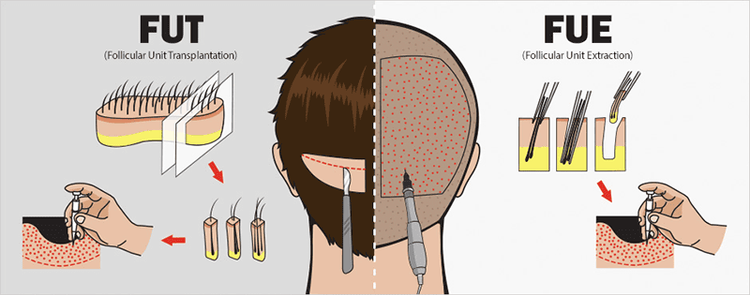
Các thủ thuật cấy tóc tương đối phức tạp và cần thực hiện trong nhiều lần tuy nhiên hiệu quả thu được rất khả quan
Although treatments for hair loss have been around since ancient times, most methods cannot completely cure this condition. For cosmetic purposes, many people can use wigs, paint eyebrows and eyelashes that have fallen out.... Several medications have also been used to slow hair loss, such as: :
Minoxidil: In certain cases, this skin preparation can cause hair to grow back, but the effect is not high. Minoxidil is usually used for young people who are just starting to show signs of baldness or who have formed small bald patches. More than 50% of people who have used minoxidil think that minoxidil can thicken hair and reduce breakage, but it does not work for people who are already bald. The drug's side effect is skin irritation, but to a relatively mild degree Finasteride: Initially the propecia in finasteride were used in high doses to treat prostate problems but gradually these were converted to treatment. male pattern baldness. Propecia works by inhibiting the production of male hormones in the skin that cause hair loss. Propecia is contraindicated for use in pregnant women because of the potential for birth defects in the unborn baby. Hair Transplant: A hair transplant is a procedure that moves areas of the scalp that contain active hair follicles to bald areas. Hair transplant procedures are relatively complicated and need to be performed many times, but the results are very satisfactory. Corticosteroids: Some cases of hair loss related to autoimmune disease can be corrected with topical corticosteroid drops or steroid injections directly into the hair loss scalp. This method can cause pain in the patient and smoothes the skin at the injection sites Prednisone: Also a steroid but taken orally is an effective treatment for hair loss but offers many side effects such as weight gain, digestive disorders, acne and menstrual disorders. Diphencyprone: This is a topical medication that in many cases can be used as a hair growth stimulant. Janus Kinase Inhibitors: A group of drugs with immunomodulatory effects are being studied and have shown very promising results in the treatment of hair loss, especially in men. Hair loss is a condition in which the hair follicles enter a resting state resulting in their inability to form keratin cells - the main component of hair. Hair loss presents many problems, especially cosmetically. The main reasons for hair loss have not been studied specifically, but there are some factors that can increase the risk of hair loss such as hormone disorders, genetic factors, trauma... Hair loss is also relatively difficult, but recently, along with the development of science and technology, new treatment methods have also been born and brought some relatively positive initial results. .
Please dial HOTLINE for more information or register for an appointment HERE. Download MyVinmec app to make appointments faster and to manage your bookings easily.
Reference sources: webmd.com, hairstetics.com, jeancoutu.comSEE MORE
Why is hair loss so much? How to fix hair loss? Hair loss in women: What you need to know




